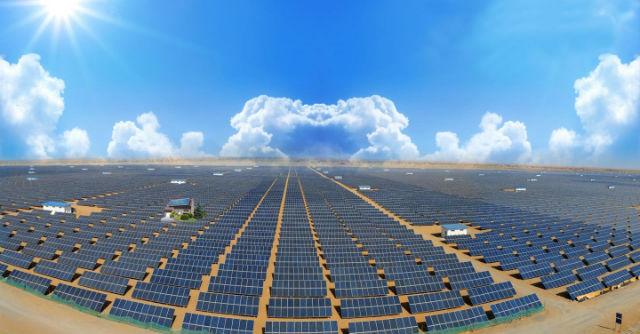
BEIJING, Dec. 25 (Xinhua) -- China's new plan to streamline and rationalize the solar energy market will help cut down wasteful investments in unviable areas and boost supply to electricity-deficient places, industry players said.
It will also better regulate the market and reduce costs, they said.
The National Energy Administration said it planned to allocate its annual solar power installation quotas based on a review of idle rates and other conditions across the country.
The idea is to effectively guide solar facilities toward where they are needed.
The administration said it would reduce quotas in regions with high solar-power curtailment rates, those scoring poorly in terms of land conditions and local government services, and areas that succeeded in reducing clean-energy subsidies.
Liu Yong, general manager of Jolywood (Taizhou) Solar Technology Co Ltd, said the new clean-energy quota system will help identify provincial targets and ease the idle capacity problem.
"It could efficiently boost the technological progress of photovoltaic power generation, industrial upgrade, and cut the cost of power generation," he said.
"The new policy, which targets mostly ground-mounted projects, will also boost overall technological upgrade and better gives solar companies a general guidance to avoid potential curtailment."
Agreed Yang Liyou, general manager of Jinneng Clean Energy Technology Ltd. The evaluation system will help promote rational investments in solar and the company will also better plan out its business expansion in the future, he said.
Analysts believe the new policy will drive solar closer to where it is needed. This will help direct new investments to places where fewer plants are idle.
"The policy will provide data on where to avoid and where to invest and will alleviate some idle solar capacity," said Peng Peng, director of policy research at the Chinese Renewable Energy Industries Association.
Joseph Jacobelli, a senior analyst tracking Asia utilities at Bloomberg Intelligence, said focusing the investments in areas where there is less curtailment is already a trend adopted by major wind energy project developers, including Longyuan and Huaneng Renewables.
"The move is unlikely to reduce solar wastage in the near term," he said. "Solar and wind power generation is likely to continue to gain ground as a percentage of the total power generation mix in China."
Many of China's solar panels are located in less-populated areas, where more solar capacity is available than local electricity grids can handle.
As a consequence, curtailment has carried a heavy cost for China. According to Bloomberg New Energy Finance, China has wasted 3.28 terawatt-hours of solar energy in 2016.
China's rapid expansion of renewable energy facilities in recent years has since caught headlines around the world.
According to the International Energy Agency, the country installed more than 34 gigawatts of solar capacity in 2016, more than double the figure for the US and nearly half of the total added capacity worldwide that year.
NEA data shows that in the first half of this year, a total 24.4 gW of solar energy was grid-connected.(Source: China Daily)




 A single purchase
A single purchase









